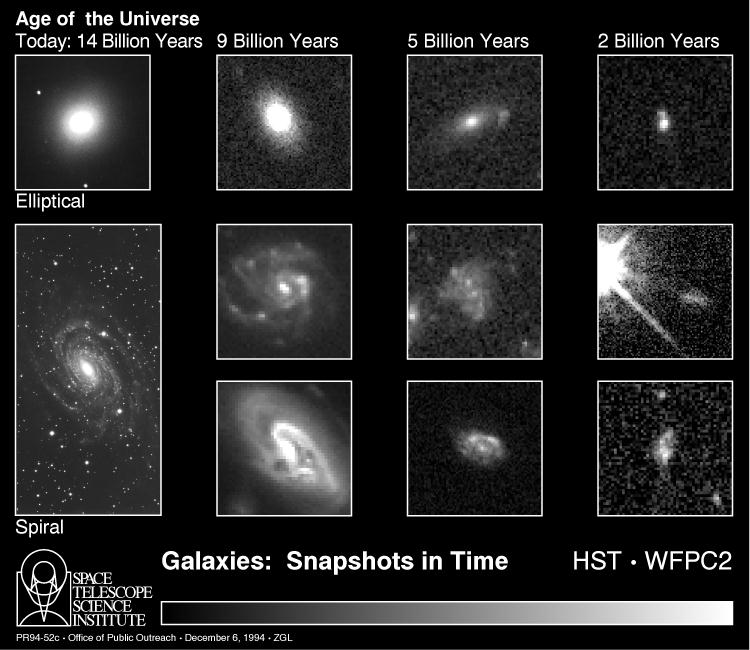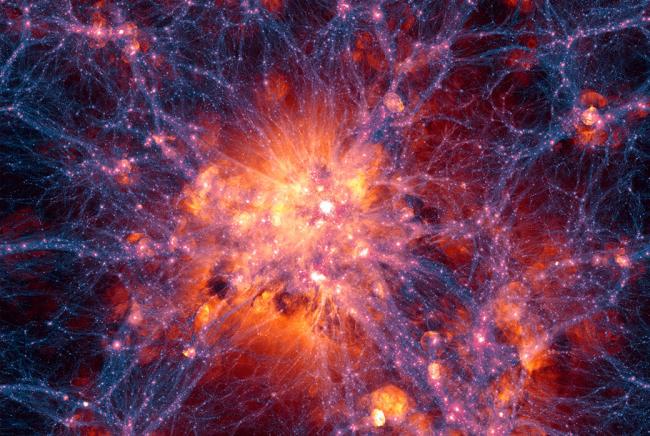Describe the Large Scale Structure of the Universe
Percolation analysis is the study of the properties of clusters. What was the process that formed galaxies and stars and planets.
Office DEPOT estions Chapter 16 - Set 2 1.

. How did such large-scale structure of the universe come about. The Large Scale Structure LSS of the universe refers to the patterns of galaxies and matter on scales much larger than individual galaxies or groupings of galaxies. A spectacular increase in our understanding of this subject has devel- oped over the last decade led by observations of the distribution of.
Login Register Cart Help. Percolation Analysis as a Tool to Describe the Topology of the Large Scale Structure of the Universe. THE LARGE-SCALE STRUCTURE OF THE UNIVERSE.
Peebles focuses on the largest known structuresgalaxy clustersweighing the empirical evidence of the nature of clustering and the theories of how it evolves in an expanding universe. Introduction The existence of large-scale structure in the universe has been known for over half a century eg 49 62. The evolution of density inhomogeneities and the velocity field in an expanding continuous medium is studied.
13 what do the large-scale structures of the universe look alike. These correlated structures can be seen up to billions of light years in length and are created and shaped by gravity. Large scale structure is defined as the structure or inhomogeneity of the Universe on scales larger than that of a galaxy.
Explains why we think these structures reflect the density patterns of the early universe. Visit NAPedu10766 to get more information about this book to buy it in print or to download it as a free PDF. The idea of whether galaxies are distributed uniformly in space can be traced to Edwin Hubble who used his catalog of 400 extragalactic nebulae to test the homogeneity of the Universe Hubble 1926 finding it to be generally uniform on large scales.
With characteristic clarity and insight P. List the observational pieces of evidence that might be found to distinguish an active galaxy from a normal galaxy. This is one of the largest observed structures in the Universe containing over 10000 galaxies and stretching over more than 137 billion light years.
Describe the large-scale structure of the universe and summarize what observational evidence led astronomers to this description. THE LARGE-SCALE STRUCTURE OF THE UNIVERSE. Large scale structure is defined as the structure or inhomogeneity of the Universe on scales larger than that of a galaxy.
A fundamental principle of cosmology the study of the origin and evolution of the Universe is that on large enough scales the Universe is homogeneous looks the same wherever you are and isotropic looks the same in whatever direction you look. In what ways do Seyfert galaxies bridge the gap between ordinary galaxies and quasars. Recollapsing critical coasting and.
The Large-Scale Structure of the Universe Across blllions of light-years space is a honeycomb of galactic superclusters and huge voids. In physical cosmology the term large-scale structure refers to the characterization of observable distributions of matter and light on the largest scales. The cone on the left shows one-half of the 2dFGRS which determined distances to more than 220000 galaxies in the southern sky out to a depth of 2 billion light years.
Galaxies and clusters of galaxies untold billions of them adorn the cosmos. But these researchers were not convinced the approach would work. Standard n -body calculations starting from the first time steps as tests of the numerical action.
Zeldovich tronomers have long recognized. The Universe exhibits structure over a wide range of physical scales from satellites in orbit around a planet through to the galaxy superclusters galactic sheets filaments and voids that span significant fractions of the. The consideration is based on the model equation of non-linear diffusion Burgers equation that together with the equation of continuity incorporating mass density gives an approximate description of density inhomogeneity growth at the advanced.
What stirred the soup into the vast ensemble of breathtaking objects that populate the universe. Large-scale structure of the cosmos. In cosmology it is the statistics of the size and number of clusters.
The large-scale structures of sheets filaments voids and galaxy superclusters are clearly visible and give this region of space a honeycomb appearance. The consideration is based on the model equation of non-linear diffusion Burgers equation that together with the equation of continuity incorporating mass density gives an approximate description of density inhomogeneity growth at the advanced non-linear. Describe the large-scale structure of the universe as revealed by redshift surveys of galaxies.
Other researchers have considered the use of galaxy clusters to probe large scale structure in the universe as well. Szalay and Yakov B. Drawn to the same scale is a small section of the SDSS in which an even larger Sloan Great Wall has been identified 100.
Describe the large-scale structure of the universe and summarize what observational evidence led astronomers to this description. The structure may result from perturbations in the density of matter early in the big bang by Joseph Silk Alexander S. Videos have been created to visualize the complexities of formation of large-scale structures.
14 describe and compare the four general patterns for the expansion of the universe. View Homework Help - dq7docx from ASTR 100 at Whatcom Community College. This is one of the largest observed structures in.
1 Describe the large-scale structure of the universe and summarize what observational evidence led astronomers to this. CaptionThe large-scale structure of the Universe is made up of voids and filaments that can be broken down into superclusters clusters galaxy groups and subsequently into galaxies. A Research Briefing 1995 Chapter.
The universe started as a hot soup.

Wmap Formation Of Universe Structures

Structure Of The Universe Universe Today

Comments
Post a Comment